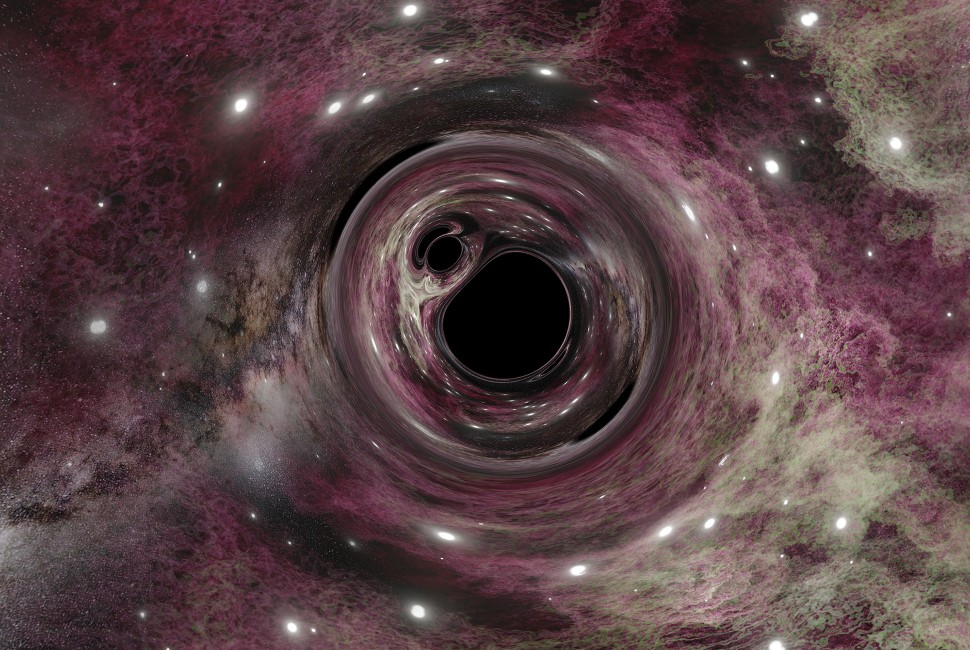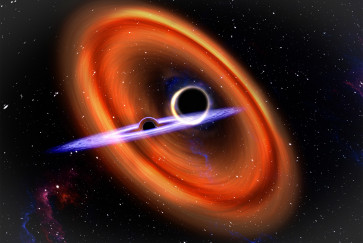Stellar-mass black holes are celestial objects born from the collapse of stars with masses of a few to low hundreds of times that of our sun. Their gravitational field is so intense that neither matter nor radiation can evade them, making their detection exceedingly difficult. Therefore, when the tiny ripples in space-time produced by the merger of two black holes were detected in 2015 by the Laser Interferometer Gravitational-wave Observatory (LIGO), it was hailed as a watershed moment. According to astrophysicists, the two merging black holes at the origin of the signal were about 30 times the mass of the sun and located 1.5 billion light-years away.
Bridging theory and observation
What mechanisms produce these black holes? Are they the product of the evolution of two stars, similar to our sun but significantly more massive, evolving within a binary system? Or do they result from black holes in densely populated star clusters running into each other by chance? Or might a more exotic mechanism be involved? All of these questions are still hotly debated today.
The POSYDON collaboration, a team of scientists from institutions including Northwestern, the University of Geneva (UNIGE) and the University of Florida (UF), has made significant strides in simulating binary-star populations. This work is helping to provide more accurate answers and reconcile theoretical predictions with observational data.
“As it is impossible to directly observe the formation of merging binary black holes, it is necessary to rely on simulations that reproduce their observational properties," said Simone Bavera, a postdoctoral researcher in the department of astronomy of the UNIGE’s Faculty of Science and lead author of the study. “We do this by simulating the binary-star systems from their births to the formation of the binary black hole systems.”
Pushing the limits of simulation
Interpreting the origins of merging binary black holes, such as the one observed in 2015, requires comparing theoretical model predictions with actual observations. The technique used to model these systems is known as “binary population synthesis.”
“This technique simulates the evolution of tens of millions of binary star systems in order to estimate the statistical properties of the resulting gravitational-wave source population,” said Anastasios Fragkos, assistant professor in the department of astronomy at the UNIGE Faculty of Science.
“However, to achieve this in a reasonable time frame, researchers have until now relied on models that use approximate methods to simulate the evolution of the stars and their binary interactions,” he said. “Hence, the oversimplification of single and binary stellar physics leads to less accurate predictions."
POSYDON has overcome these limitations. Designed as open-source software, it leverages a pre-computed large library of detailed single- and binary-star simulations to predict the evolution of isolated binary systems. Each of these detailed simulations might take up to 100 central processing unit (CPU) hours to run on a supercomputer, making this simulation technique not directly applicable for binary population synthesis.
“However, by precomputing a library of simulations that cover the entire parameter space of initial conditions, POSYDON can utilize this extensive dataset along with machine learning methods to predict the complete evolution of binary systems in less than a second,” said Jeffrey Andrews, assistant professor in the department of physics at UF. “This speed is comparable to that of previous-generation rapid population synthesis codes, but with improved accuracy.”
Introducing a new model
POSYDON, a major code development project, stands for POpulation SYnthesis with Detailed binary-evolution simulatiONs. Kalogera and Tassos Fragos, a former Ph.D. student in Kalogera’s group, are co-principal investigators of the project, which began at Northwestern in 2019 with support from the Gordon and Betty Moore Foundation and the Swiss National Science Foundation. Fragos, now with the University of Geneva, is a co-author of the study. The University of Florida joined the collaboration this year.
Previous models overestimated certain aspects, such as the expansion of massive stars, which impacts their mass loss and the binary interactions. These elements are key ingredients that determine the properties of merging black holes. Thanks to fully self-consistent detailed stellar-structure and binary-interaction simulations, POSYDON achieves more accurate predictions of merging binary black hole properties such as their masses and spins.
The research team is currently developing a new version of POSYDON, which will include a larger library of detailed stellar and binary simulations, capable of simulating binaries in a wider range of galaxy types.



